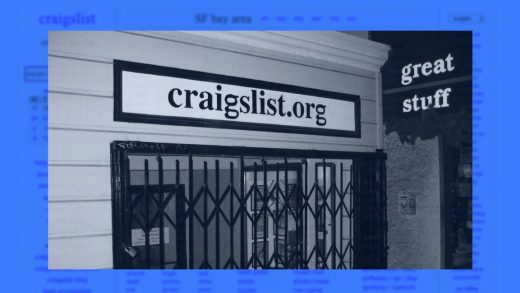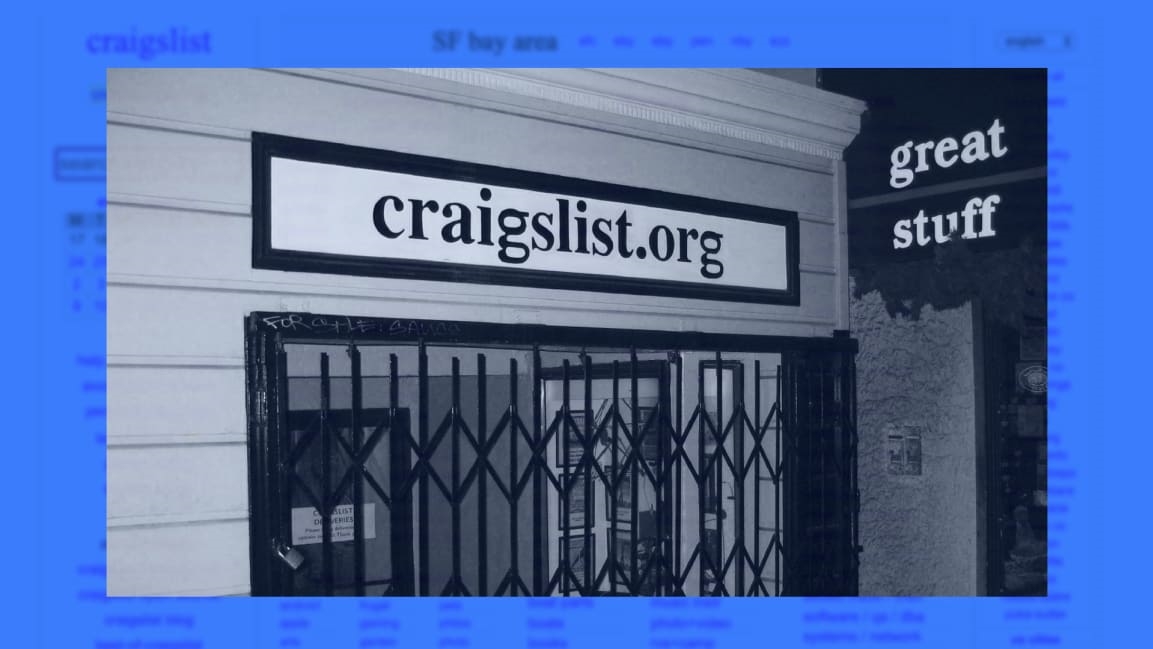At 25, Craigslist is a survivor of the more democratic web we lost
By Jessa Lingel
It’s easy to be cynical about the internet, and harder to remember a time when being online felt less commercial and more democratic. But there was a period when websites didn’t rely on user data for profit margins, when people still viewed the internet as a radical laboratory for freedom and liberty.
Can those ideas and values from the earliest days of the web be revived? Or is the internet a lost cause?
In my new book, An Internet for the People, I look at one popular website that has a lot to teach us: Craigslist. Twenty-five years after its launch, Craigslist is a reminder that the earlier, more democratic version of the internet can still thrive.
The platform has weathered the internet’s boom-and-bust cycle, with countless peers and competitors coming and going. The site looks more or less the same today as it did in the late 1990s.
Sort of like a shark that’s never had to evolve, Craigslist has remained incredibly successful without giving up values of anonymity, accessibility, and transparency.
You don’t need to turn users into data
Craigslist started as an email listserv in 1995, when early web enthusiasts were looking for a sense of community and DIY education. By 1996, it had become a website with job listings, apartment rentals, and personal ads. Almost as soon as the internet was becoming widely available—roughly 1 out of 5 households was online at the time—Craigslist was there to help people find roommates, look for jobs, go on blind dates, or sell used furniture.
Craigslist CEO Jim Buckmaster has been at the helm since 2001, and the founder, Craig Newmark, is still involved in the company. For years, Newmark did customer service, responding to design complaints and concerns about scams. Today, Craigslist has more monthly page visits than The New York Times or ESPN, and it’s been incredibly profitable.
Its profitability might come as a surprise to some. Many of those I spoke with thought Craigslist was a nonprofit or that it was community-run. In fact, Craigslist has always charged money for certain ads, such as job postings and classified ads. (By siphoning revenue from classified ads, Craigslist has been one reason newspapers across the country have struggled to stay in business.)
More recently, Craigslist has started charging for other kinds of ads, such as real estate listings from firms and car ads from dealers.
But regular users don’t have to pay a fee. The site doesn’t display banner ads, nor does it sell user data to third parties.
This is a very direct relationship between user and platform—and it’s totally different from the convoluted streams of data and targeted advertising used by platforms such as Facebook and Google. When Facebook users aren’t sure how the platform makes money, it’s because the process of analyzing data and selling ads is deliberately hidden.
When Craigslist users don’t know how the platform makes money, it’s because they’re part of the user group who simply doesn’t get charged. With its straightforward relationship between people and profits, Craigslist is an important reminder that platforms don’t have to turn their users into data in order to make money.
Keep it simple, stupid
Change and disruption aren’t just buzzwords for Big Tech, they’re gospel.
Facebook constantly tweaks its design, rolling out changes to parts of its user base to test reactions. If you don’t update your platform and roll out new features, users will get bored and go elsewhere—so the thinking goes.
Craigslist never bought into this. If you compare screengrabs of Craigslist’s homepage from 2008 and 2018, you’ll struggle to find major differences.
It isn’t quite right to say that Craigslist hasn’t changed at all. Categories for ads have come and gone, while features such as uploading photos and integrating Google Maps have been added. But on the whole, Craigslist has remained profoundly stable, and when I interviewed Craigslist users, I heard over and over a fondness for the website’s bare-bones aesthetic.
As one interviewee explained, “It’s a simple interface, it’s easy to use. I don’t know, I guess just that it feels like the old internet a little bit.”
Instead of “move fast and break things,” Craigslist’s mantra could be “keep it simple, stupid.”
Anonymity isn’t always a problem
One of the biggest differences between Craigslist and its ever–increasing list of competitors is anonymity.
When Craigslist first went online, norms around anonymity were different. Most people used pseudonyms or handles in the chat rooms and message boards of the early internet. Over time, norms shifted so that anonymity became suspicious and “real” names became expected, if not required.
Craigslist’s anonymity policy has become the main driver for its reputation as sleazy and weird. When users are anonymous, there’s no accountability, or so the logic goes. And yes, there have been terrible incidents of violence and fraud on Craigslist.
But there have also been crimes and cons committed on Facebook, eBay and LinkedIn, even though those sites require identification and profiles. Furthermore, what usually goes unsaid is that platforms need users to be identifiable to sell targeted ads.
When I interviewed Craigslist users about anonymity, I heard a powerful defense of it from people of color and poor people who might otherwise be discriminated against. Being anonymous also meant they weren’t alerting friends and neighbors that they were selling items or looking for apartments, which gave them a greater sense of security and privacy.
Craigslist’s policies can’t necessarily be imported to other platforms, and we might not want everything on the internet to look like it’s from the 1990s. But the steady march to a hypercommercialized internet where users trade their data for online community isn’t inevitable. Craigslist serves as a powerful reminder that some ideas from the early web are worth holding on to.
Jessa Lingel is assistant professor of communication at University of Pennsylvania. This article is republished from The Conversation under a Creative Commons license. Read the original article.
(18)



